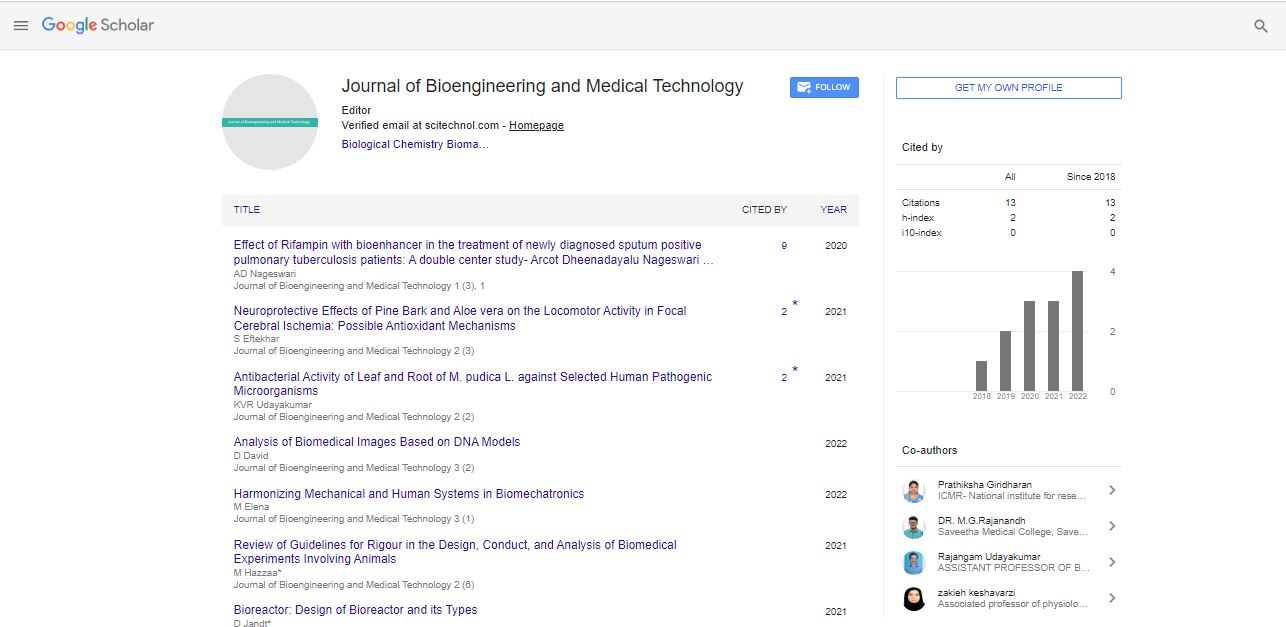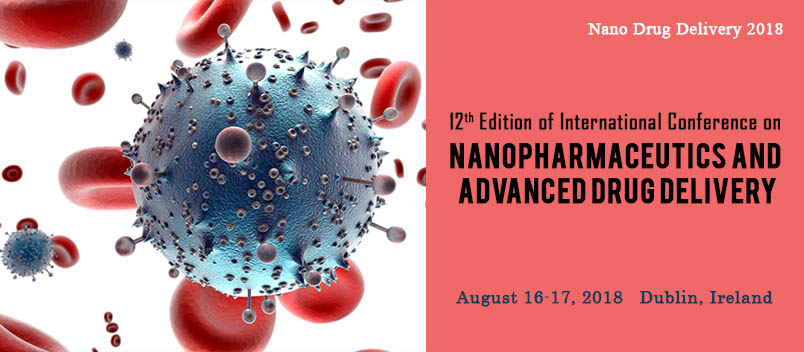Perspective, J Bioeng Med Technol Vol: 3 Issue: 2
The Application of Network Models to Therapeutic Target Prediction
Tamura Hiroshi*
Department of Chemistry, University of Aveiro, Aveiro, Portugal
*Corresponding Author:Tamura Hiroshi
Department of Chemistry, University of Aveiro, Aveiro, Portugal
Email: tamurahiroshi@gmail.com
Received date: 02 March, 2022; Manuscript No. JBMT-22-57163;
Editor assigned date: 04 March, 2022; PreQC No. JBMT-22-57163(PQ);
Reviewed date: 15 March, 2022; QC No JBMT-22-57163;
Revised date: 25 March, 2022; Manuscript No. JBMT-22-57163(R);
Published date: 01 April, 2022; DOI: 10.4172/jbmt.100054.
Citation: Hiroshi T (2022) The Application of Network Models to Therapeutic Target Prediction. J Bioeng Med Technol 3:2.
Abstract
Pharmaceutical corporations are very keen in drug target identification, and there has been a great deal of study done on the subject. Both the biological network community and the graph algorithms community are involved in this interdisciplinary research. Synthesizing or inferring the complicated network of interactions related to the disease, linking this network to disease-specific behavior, and predicting which components are key mediators of the behavior are all key phases in a typical therapeutic target identification challenge. All of these phases have to do with graph theory or graph algorithms. We give modeling and algorithmic approaches for therapeutic target identification in this perspective, as well as highlight a number of algorithmic advancements that have received relatively little attention to far, in the hopes of improving the linkages between these two research areas
Keywords: Drug target identification; Boolean models; Signal transduction networks
Abstract
Pharmaceutical corporations are very keen in drug target identification, and there has been a great deal of study done on the subject. Both the biological network community and the graph algorithms community are involved in this interdisciplinary research. Synthesizing or inferring the complicated network of interactions related to the disease, linking this network to disease-specific behavior, and predicting which components are key mediators of the behavior are all key phases in a typical therapeutic target identification challenge. All of these phases have to do with graph theory or graph algorithms. We give modeling and algorithmic approaches for therapeutic target identification in this perspective, as well as highlight a number of algorithmic advancements that have received relatively little attention to far, in the hopes of improving the linkages between these two research areas.
Keywords: Drug target identification; Boolean models; Signal transduction networks
Introduction
We'll start with a stimulating example to demonstrate a common therapeutic target design issue that this study is interested in. T-Cell Large Granular Lymphocyte (T-LGL) leukemia is a blood malignancy in which mature Cytotoxic T Cells (CTLs) proliferate abnormally. CTLs are created to destroy virus-infected cells, however unlike regular CTLs, which die after effectively fighting the virus due to activation-induced cell death, leukemic T-LGL cells remain long-term competent. T-LGL has been found to be deregulated (e.g., constitutively active) in 33 proteins and small molecules associated to cytotoxic T lymphocyte activation and activation-induced cell death. Prosurvival signaling pathways such as MAPK and JAK-STAT3 are known to be increased, and T-LGL cells are resistant to Fas-induced apoptosis (programmed cell death). Because there is no known cure for T-LGL leukemia, finding a viable therapeutic target, such as a protein whose knockdown might cause these T-LGL cells to apoptosis, is a top goal. The above example highlights some key steps in our typical therapeutic target identification problem, namely, synthesizing or inferring the complex network of interactions relevant to the disease (in this case, the signaling network corresponding to activationinduced cell death), connecting this network to the relevant behavior (in this case, aberrant survival), and predicting which components are key mediators of the behavior. Nontrivial graph algorithmic characteristics are present in all of these processes. We hope to highlight a number of algorithmic innovations that have received very little attention so far in this review
Synthesizing Signal Transduction Networks
The maintenance of cellular homeostasis and cell activity such as growth, survival, death, and migration are all dependent on signal transduction and gene regulatory networks. Many diseases including developmental disorders, diabetes, vascular disease, autoimmune and cancer are caused by deregulation of these networks. Gene mutations or expression alterations, for example, can result in inappropriate behaviors that promote tumor formation and/or cell migration and metastasis. As a result identifying the regulatory networks responsible for disease-relevant cellular activities is a critical first step toward developing therapeutic methods that target that disease. The presence of a node or a small group of nodes that can be identified as a disease proxy or proxies is an important characteristic of this network. This node could be a concept node that describes a behavior like apoptosis or migration, and its upstream nodes (regulators) should be the proteins that are most directly responsible for the behavior, such as capsizes in programmed cell death. The ideal proxy for the sickness in the T-LGL network, when apoptosis is the usual outcome, should be a node that encapsulates the logical negation of apoptosis. Its upstream regulators are the same nodes as the node apoptosis upstream regulators, but the edges sign (label) is inverted. The creation of such a network begins with a thorough review of relevant literature and experimental data on the interactions between the network's components. Although different studies create a large number of important components and causal linkages for many biological processes, there is a lack of information on the overall structure and mechanisms of these processes. As a result, data sources from individual experiments must be compiled and combined. There are numerous sorts of experimental evidence for the involvement of a component or a regulatory interaction in a biological process. A change in the concentration of a protein after treating the system with an input signal, for example, suggests that this protein is part of the signal's signal transduction network. High-throughput gene expression, proteomics, and metabolomics data can be used to gather such evidence. Furthermore, if knocking out or overexpressing a component causes a change in the relevant cellular response, this component is thought to be engaged in the biological process. Highthroughput phosphor-proteomics, protein-DNA interaction, and genetic interaction studies can all be used to gather causal correlations between components. These causal interactions can be shown as directed edges connecting one component to another, each with one of two signs: Activating (positive) or inhibitory (negative). In other circumstances, however, perturbation experiments produce composite causal links that must be broken down into component-to-component interactions based on the specific situation. In all but a few wellstudied circumstances, finding the most parsimonious (minimum) network that explains all the empirically collected causal findings is a very useful step in network analysis. From an initially too-redundant network, this most parsimonious network is created by gradually deleting those edges or nodes that do not affect acceptable reachability relations between nodes.
Network Construction
Interaction information between components can be divided into two groups using the techniques of direct interactions involving biochemical data pertaining to enzymatic activity or protein-protein interactions. Putative interaction patterns double-causal linkages that originate from the observation of differential reactions following perturbation studies. For example, the double-causal connection X results from a diminished Response (R) to a Stimulus (S) in an organism where component X has been knocked out compared to a normal (wild-type) organism. A general methodology for synthesizing direct and double-causal information into a minimal consistent network is described a software called NET-SYNTHESIS for synthesis of networks based on the framework in; this software was used to develop a network model to examine the signaling components that affect the survival of cytoxic T cells in LGL Leukemia.
Pathway Preserving Network Simplification
In the following way, PNC can be utilized in a much broader context of network simplification. Only a portion of the nodes in many large-scale regulatory networks are of intrinsic importance (for example, because they are differentially expressed in different external situations) whereas the remainder serve as background or mediators. As a result, nodes of lower interest or confidence can be designated as pseudo nodes and subsequently collapsed, making the network of high-interest/confidence nodes easier to read. PNC with BTR, for example, can be used to focus on certain pathways in disease networks to better understand the molecular mechanism of illness start and hence aid in drug target identification utilizing this technique. As an illustration, this approach was used by Kachalo et al to focus on pathways that involve the 33 known T-LGL deregulated proteins in a cell-survival/cell-death regulation related signaling network synthesized from the trans path 6.0 databases. The strategy of focusing on the influence of Ras on apoptotic response via the Fas/FasL pathway by labeling nodes that relate to proteins that have no evidence of being modified during this effect as pseudo nodes and simplifying the network using PNC and BTR iterations. Although complete PNC in this approach can result in a significant network reduction, the consequence of such an extreme simplification is that pairs of incoherent edges (two edges with opposite labels) can exist among the same pair of nodes. In biological regulatory networks, incoherent routes between pairs of nodes are common, but interpreting incoherent edges without knowledge of the mediators of the two opposing regulatory mechanisms is difficult.
 Spanish
Spanish  Chinese
Chinese  Russian
Russian  German
German  French
French  Japanese
Japanese  Portuguese
Portuguese  Hindi
Hindi 
